The counterintuitive success of MAT: Using drugs to beat drug addiction
As long as addiction has existed, the most popular antidote has been abstinence.
Even after the U.S. Food and Drug Administration approved methadone to treat heroin addiction in 1972, quitting cold-turkey remained the most common recovery strategy for people dependent on drugs. The use of medication to help people conquer addiction – called Medication-Assisted Treatment, or MAT – has evolved since then, with many variations of drugs now available to control cravings, erase opioids’ effects, and relieve withdrawal symptoms.
Scientifically proven
Recent studies have shown that MAT is the gold standard for the treatment of opioid use disorder.
Yet a stigma persists, due to a lack of training for physicians and misconceptions that MAT merely substitutes one drug for another. That slow embrace of such a life-saving treatment could have catastrophic results, considering that the opioid crisis continues to kill indiscriminately across America. In New Jersey alone, for example, more than 3,000 people died from overdoses last year, with another 1,126 through May this year, according to the Attorney General’s Office.
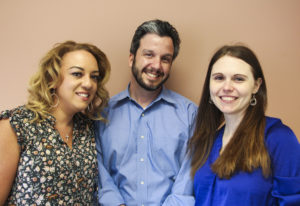 Catholic Charities, Diocese of Trenton offers MAT in its addiction-recovery programs in Mercer and Burlington counties, which include For My Baby and Me (for pregnant women and new mothers who are homeless or at risk of homelessness), New Choices (for youth up to age 21), Partial Care (for adults with mental illness), and outpatient services for more general populations.
Catholic Charities, Diocese of Trenton offers MAT in its addiction-recovery programs in Mercer and Burlington counties, which include For My Baby and Me (for pregnant women and new mothers who are homeless or at risk of homelessness), New Choices (for youth up to age 21), Partial Care (for adults with mental illness), and outpatient services for more general populations.
And in February, Catholic Charities launched a new partnership with Capital Health to connect patients in their emergency room who struggle with addiction to outpatient services that help ensure long-term recovery.
We talked with three of our staff experts – Director of Nursing Lisa Merritt, Opioid Expansion Project Coordinator James Keashon, and Director of Addiction Recovery Services Mischelle Kristofor – about that new partnership, as well as their thoughts about why damaging myths endure about MAT.
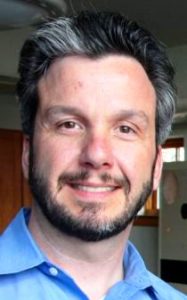 A novel partnership
A novel partnership
Q: What exactly is this new partnership with Capital Health?
Keashon (pictured left): We connect individuals who come in for emergency services to addiction services that will help them sustain their wellness and be successful in the community. We have staff stationed there 8:30 to 11 a.m. Mondays, Wednesdays, and Fridays, and we plan to expand our hours as needed.
Q: Why was something like this needed?
Kristofor: There was a breakdown in the connection between people who were going into the emergency room – for overdosing, or a variety of issues, some directly linked to their substance use, some not – who also had substance abuse concerns. The emergency department staff treated them for their acute issue, but they would have to direct them to an outside agency for their chronic issue (addiction). As a hospital emergency department, they don’t have outpatient addiction-recovery services there. So the ER staff would reverse an overdose or treat withdrawal symptoms, but then they’d discharge them with referral paperwork and that’s it. It was: ‘Here’s some information, call them in the morning, and good luck!’
But if I overdose and go to the ER to reverse my overdose, I’m not leaving after discharge to go to a treatment facility. I’m leaving to get high again. Under this partnership, there’s a warm handoff – there’s a human being standing in front of me saying: “Come to my program. I can take you there right now.” Addiction treatment has to be long-term in order for it to be effective.
Door-to-door service
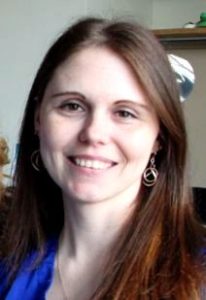 Keashon: The idea is door-to-door service that supports an individual’s long-term recovery. There is a value in being able to bring a patient straight from ER discharge to Catholic Charities’ ambulatory detox clinic the same day to begin MAT.
Keashon: The idea is door-to-door service that supports an individual’s long-term recovery. There is a value in being able to bring a patient straight from ER discharge to Catholic Charities’ ambulatory detox clinic the same day to begin MAT.
Q: Is this the first time Catholic Charities and Capital Health have partnered to improve community care?
Kristofor (pictured left): No, we have a long history with Capital Health. Their crisis department refers patients to our EISS (Early Intervention Support Services) team. We also partner on For My Baby and Me (see video below) and a variety of other programs.
Breaking the stigma
Q: What exactly is MAT, and is it the primary treatment for people who turn to Catholic Charities for help?
Kristofor: It depends on whether people want it or not. Some people just want to be done with all drugs, cold turkey. It is a decision the person makes with the treatment team. There are criteria for whether MAT is the best treatment strategy, including whether they have significant other health issues. We do have an increasing number of clients who are choosing MAT.
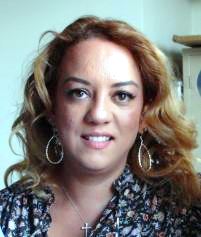 Merritt (pictured left): There are different medications that work in different ways for people in recovery, including Suboxone (known generically as buprenorphine, or bupes), Subutex, and Vivitrol. Some are pills, some are injections. Methadone is a drink. If you’re pregnant, you need a medication without Naloxone (also known as Narcan; it blocks the effects of opioids) in it.
Merritt (pictured left): There are different medications that work in different ways for people in recovery, including Suboxone (known generically as buprenorphine, or bupes), Subutex, and Vivitrol. Some are pills, some are injections. Methadone is a drink. If you’re pregnant, you need a medication without Naloxone (also known as Narcan; it blocks the effects of opioids) in it.
Q: Why are people reluctant to use it?
Keashon: The stigma. There’s especially a stigma surrounding methadone, which some people consider ‘liquid handcuffs.’ Many people feel like it’s cheating in their recovery, like: ‘You’re still an addict, you’re still not in recovery, because now you’re addicted to methadone.’ Fortunately, Suboxone doesn’t have the same perception and appears to be more accepted within the community.
Two models of treatment
Kristofor: If you go to a Narcotics Anonymous meeting, 90 percent of the time, people will call you out for being on Suboxone: ‘You’re not clean! You’re not doing this the right way!’ But that’s not true. There are two general schools of thought in addiction recovery: the abstinence model and the harm-reduction model. As an agency, we used to use the abstinence model, which is to just stop using whatever substance it is. That’s it, black and white.
We started using the MAT in our ambulatory detox clinic about a year and a half ago. We shifted to harm reduction, meaning we’re reducing the harm that you’re doing. Is it ideal for somebody who’s pregnant to be on Suboxone? Absolutely not. Is it substantially better than them being on heroin? Absolutely. So you’re reducing the harm.
Q: And science supports a harm-reduction model, correct?
Kristofor: Yes. And our doctor (Dr. Siraj Sheikh) very much believes in MAT.
Hurdles in the way
Q: Are there any other obstacles to MAT?
Kristofor: Funding. A lot of our clients living on the streets because of their heroin addiction don’t have health insurance. We can try to get them public assistance, but not all of them qualify for a variety of reasons. And a lot of drug courts do not allow MAT. But we never turn people away because of an inability to pay.
Keashon: Also, it’s a commitment. For people just starting MAT, you have to come every day (for daily dosages) for a couple weeks. They can’t get a week’s worth or a month’s worth of doses at once, because they could abuse or resell it. Catholic Charities offers treatment and recovery; we are not a dispensary where the doctor will write you a prescription for 30 days and say: ‘See you later!’ No, we’re actually trying to engage people in treatment because that is better for their long-term success, self-reliance, and stability.
 One-stop care
One-stop care
Q: How exactly does it work?
Merritt: When a client comes in (to our recovery center in Trenton, pictured left), they see the nursing staff and the prescriber, Dr. Sheik. The nurse then gets the prescription; we have a pharmacy on site, making it a much easier process, because we can just have the medication delivered to us or run downstairs and get it.
Our nursing staff monitors the first dose to make sure there are no adverse reactions to the medication. Clients are monitored from one to three hours, depending on their level of addiction, their history of withdrawal, and any other co-morbidity. We monitor their blood pressure and all their vitals. While this is happening, we educate them on medical problems caused or worsened by substance use, the importance of primary medical care especially OB/GYN, alternative coping skills, and relapse prevention planning.
Q: How long is the process?
Merritt: There’s a range. It could be several months to several years. Dr. Sheik’s outlook on it is that he likes to see someone taper down off MAT.
A unique approach
Kristofor: There are other agencies who offer MAT, whether that’s methadone only or other medications. But we are unique in the supports and wraparound services we offer. Besides coming in regularly for their MAT dosages, we have group and individual counseling and can connect clients to other Catholic Charities services for whatever other needs they may have.
We’re also unique in that we provide child care and transportation for our clients who attend group. We also have two bilingual groups, including one on weekends, to serve the Spanish-speaking community. And minors in our New Choices program can get MAT, as long as they have parental consent.
Q: So the future in addiction treatment is MAT?
Keashon: I believe that MAT has the longest documented successful treatment outcome, more than any other modality, whether you’re on it for six weeks, six months, six years, or the rest of your life. MAT is harm reduction. It’s an alternate approach to the abstinence-only model, which isn’t effective to many suffering with an opioid addiction.
Kristofor: Our programs that offer MAT have been extremely successful. Take For My Baby and Me, for example. Every mother in that program has left the hospital with custody of her baby, and the babies are born healthier, with fewer complications and NICU stays. That probably would not have happened without MAT and counseling involvement. Because of these kinds of successes, we continue to increase our services and ability to provide wrap-around services.
Subscribe for more news
To subscribe to our blog posts and news releases, fill out the fields below.


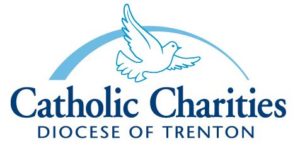
Catholic Charities opens new addiction recovery program in Mercer County - July 10, 2020, 1:44 pm
[…] The new program is open to Mercer County residents amenable to the idea of MAT. MAT – the use of FDA-approved medications in combination with evidence-based behavioral therapies – has been proven to significantly reduce addiction and cravings, prevent relapses and re-establish he… […]